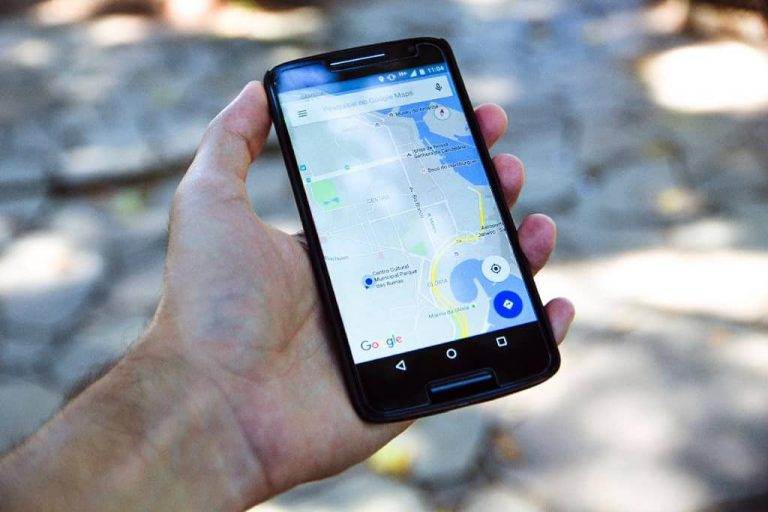What is e-commerce?
What is an Ecommerce business?
E-commerce is short for electronic commerce. It is an online store where people can surf and buy products online without going to the physical store. It is something that has made our lives convenient.
Over the years, the electronic business has rapidly grown. It has been projected to hit $4.878 trillion in 2021. As a result, E-commerce has become an essential tool for both small and large business firms worldwide.
History of E-commerce
The history of eCommerce goes back to the 1960s. However, it has been over a half-century since it was introduced to exchange data through Electronic Data Interchange(EDI).
The introduction of an online service provider, CompuServe, was made in 1969. The online service provider introduced email and internet connectivity, influencing E-commerce websites.
1. The Invention of Teleshopping in 1979
The concept of online shopping was invented in 1979 by Michael Aldrich. He is an inventor and entrepreneur. Aldrich operated the system by connecting the TV with a transaction-processing computer and telephone line called “Teleshopping.”
The system got marketed in 1980. Initially, it was installed mainly for business-to-business models in the UK, Ireland, and Spain. The invention became the foundation of the modern e-commerce business.
2. The Launch of E-commerce Companies
An overview of the history of eCommerce highlights the Boston Computer Exchange. The world’s first eCommerce company launched in 1982. Boston Computer Exchange was an online electronic trading company for selling used computers. The operation was before the internet was widely available.
Tim Berners Lee invented the web browser called the World Wide Web in 1989. It is a primary tool for interacting with billions of people online. The Hypertext Project with the Internet led Lee to develop URL, HTML, and HTTP. After that, eCommerce fast-forwarded from the early 1990s.
Charles M. Stack created the first online bookstore called Book Stacks Unlimited in 1992. The functioning format of the company was the dial-up bulletin board. Later, it got replaced by the Internet system. Following the first online bookstore, Jeff Bezos, the founder of Amazon. He introduced Amazon as an online bookstore in 1995.
3. The First online purchase
The New York Times report takes you back into the time of Arpanet. Starting as a tool to share information, the students of Stanford bought Marijuana from MIT students in 1972. However, it does not mark the first online order as it didn’t ensure any confirmed exchange of funds and no real shopping experience.
An e-commerce software company, Shopify, also mentions the grocery order made by a 72-year-old British woman. In addition, it recorded the absence of electronic money exchange.
The world saw the emergence of online retailing in 1994. The New York Times states the first online secure transaction of purchase of Sting CD, sold by US retailer, NetMarket on 11th August 1994. The payment was made using data encryption software.
4. The rise in E-commerce
The emergence of the World Wide Web opened the door for many new e-commerce services. The NSF(National Science Foundation) began charging a fee for registering domain names in September 1995. As a result, domain names grew from 120,000 to 2 million in just three years.
In the early 2000s, internet access in homes outlined effects on e-commerce. For example, an article in the E-commerce Times highlighted a 26% increase in online sales.
An online business site, Amazon, reported a 28% rise in sales. As a result, it has grown to be the largest online retailer in the world.
M-commerce as e-commerce
The online business upsurged to a higher level with the use of mobile phones and social media. The rise of mobile commerce appeared in 2010. In the expanding market of smartphones, almost 1.6 billion people use their mobile devices to shop online. The easy usage of smartphones replaced the desktop.
Social media platforms opened new opportunities for their consumers. Social Media Giant like Facebook has 1.47 billion active users. The m-commerce sector noted a 39.1% increase in sales in 2016.
Advantages of e-commerce.
Online shopping has a lot of benefits for business owners and shoppers. Let’s have a detailed look.
1. Convenience
The online shops offer shipping products to the doorstep. Thus, the online store eliminates the effort of physically traveling to the shop to buy stuff. The most significant advantage is it eliminates the physical restriction. You can shop for anything from around the world and have it delivered.
If you have a busy schedule, you can shop anytime on any day. It removes the hours limitation associated with a traditional brick-and-mortar store.
2. Global outreach
The online store is just a website. A physical store has minimal reach; your e-shop has no geographical boundaries. So anyone with the internet can access it from anywhere. It can be browsed globally by anyone. It makes it easier for you to reach new customers all over the globe. Creating a global brand is less expensive now.
3. Low Investment and Operation Costs
The physical store has considerable running costs such as inventory management, rent, etc. Therefore, starting up a retail store can cost you a leg and an arm. The financial cost of setting up and running an e-commerce business is comparatively low. It is one of the reasons why online stores have lower prices.
It translates into higher margins, too.
4. No Barrier, Time, and Location
A physical store will likely be open at a specified time and in a particular location. An online shop is open 24×7. You will be making sales even when no one attends to customers.
The feature alone improves your chances of sales and revenue. Your store works while you are sleeping.
5. Easy to Display
The online business depends on visual presentation. Online websites ease the process of showing your products. You won’t have to worry about space for storing products. The quality pictures make buying easy. In addition, the product page is an excellent place to tell detail comprehensively.
Disadvantages of e-commerce
1. Delay of Goods
Delay in delivery has been haunting the e-commerce website forever. Business owners conclude this is a great challenge to tackle. It can make customers lose trust.
A variety of strategies mentioned here can help you prevent delays:
- Strong communication: Suppliers or customers will likely prioritize those who clearly understand their needs and expectations. Active communication with suppliers and customers can be a great alternative to avoid delays.
- Tracking Feature: A tracking system is reliable and real-time data. It lets consumers know their package’s latest status and estimated delivery date. Adding the tracking feature is an excellent way to deliver your efforts to the best customer service.
- Order Early: Supply and delivery is a long process. The delay, sometimes, can’t be avoided. The proverb “The early bird catches the worm” best explains this.
As the service provider, you must check, manage, and plan to succeed. In addition, you should be able to analyze data and make accurate demand predictions. A proactive step of ordering in advance can stop delays.
2. Lack of Security
The growing number of fraudulent online businesses has created fear among consumers. Some of the unauthorized sites seek to gain by credit card fraud. It is one of the main limitations of E-business. A website’s lack of security software affects customers’ security and privacy. In addition, the countless number of cyber-attacks have created panic.
3. Technology
The server crash is for real. Your website can sometimes be overloaded with lots of traffic, and it can get slow or crash. However, too many website crashes can harm your ROI. A slow website will leave a bad taste in your mouth. As your business ages, there may be products you must have stopped selling. You may have taken those pages offline.
You may have lots of 404 pages or broken web pages.
4. Lack of real experience
One of the biggest complaints about the online store has been not feeling the product physically. Products like clothes, shoes, etc., are items that most would like to get hands-on experience. The E-commerce experience of such items can be very limiting. However, a detailed product description with high-quality zoom-in pictures and a reasonable return policy can help you overcome the issue.
How to keep your e-commerce secure?
Some of the critical security measures every business should take:
1. Two- factor Authentication
Two-step verification is not a new concept. This security process requires your password and username and also additional information. The two-step verification will require you to add a verification code apart from the correct password. Then, the verification is generated via the app, or a text message is sent to you on your phone.
Your login is authenticated if both are correct: your password and the verification code.
2. Encrypt User Data
Data encryption is the most important and powerful way to keep your data safe. It involves converting your data into a code only the intended recipient can access. It’s also called Digital Locker.
3. Up-to-date
Not just better performance but also high security is offered when you update. It is easy to steal data and allows hackers to control your computer when your software isn’t updated.
The security benefit of making an update can outweigh the problem.
4. Use Strong Passwords
We use passwords to prove our identity when using websites. The best practice for a password is combining letters (small and in caps), numbers, and characters. A strong password can prevent hackers from cracking the code and is unlikely to be guessed.
It is also recommended to change passwords every 90 days. It can be a hassle, but it’s worth the effort.
5. Lack of Personal Touch
Every consumer has a different preference. However, the customer should be the top priority. Online businesses having a self-service nature lack delivery customized service. E-commerce can not offer a personal selling experience to customers through a device.
However, the growth of AI( Artificial Intelligence) has helped tackle some parts of it.
What is Mobile Commerce?
Mobile commerce is also known as m-commerce. It is performing e-commerce through mobile devices. M-commerce is projected to be the next generation of e-commerce.
With smartphones getting popular, there has been a considerable increase in the order of goods via mobile devices than desktops.
While developing an e-commerce website, it is also essential to make your store accessible by phone. M-commerce should also cover a wide variety of transactions. Transaction from the telephone includes shopping, payments, and banking.
Some of the benefits of building m-commerce are:
- Enabling the websites to be accessible through mobile devices can enhance customer experiences. It is a great advantage when users can find whatever they want without switching to a desktop.
- The mobile commerce application can boost retail sales with trouble-free website access anytime and an easy transaction feature.
- M-commerce also ensures personal touch in its services. For example, the push notification function covers the gap in delivering updates and offers.
M-commerce is a doorway to opportunities. Such as Omni-Channel retail is a modern approach to delivering services online and offline. It allows selling through different channels.
Different Types of eCommerce Websites.
Business-to-business(B2B)
Business to Business e-commerce relates to the sales between business entities. For example, this commerce transaction involves a manufacturer, wholesaler, and retailer.
It is considered the largest e-commerce model. B2B reduces the cycle time leading to higher productivity at a lowered cost.
This system of marketing aims at approaching new business connections.
Some of the world’s top B2B websites are Alibaba.com, eWorldTrade, and globalsources.com.
Business-to-Consumer(B2C)
Business-to-Consumer is the most common online business. The B2C trade takes place between the company and customers.
It started in the mid-1990s. With the inception of the internet, the B2C method evolved to a great extent. The website functions as a medium of informative content for customers. It offers the consumer a variety of choices and a chance to compare.
This online website sets its objective to active customer service with quick delivery.
Consumer-to-Consumer(C2C)
These types of websites are third-party. They offer an online platform for consumers to sell to other buyers. For instance, you may have known eBay.com and quikr.com for a while now. These are the online gateways for reselling. To make you understand better, these are C2B2C (consumer to business to consumer) e-commerce.
Consumer-to-Business(C2B)
The C2B is a type of online business model. Here, the companies are the valuable consumer of the service offered by an individual. It is a flip of the business-to-consumer concept. Individual consumers provide valuable products and services. The C2B in action is all about you and your identity.
For example- a graphic designer presents several new designs for the company site. The company selects from numerous choices and makes a valid purchase. Companies like Shutterstock rely on photos updated by users.
Business-to-Administration(B2A)
The B2A is a deal of online business and public administration. These type of websites offers access to government services around the clock. B2G(Business-to-government) is another name for this term. It advances users with government services.
Example- E-governance is the application easing the legal processes.
Consumer-to- Administration(C2A)
These types of websites are considered liable. It helps with information regarding legal authorities. It eases the process for the consumer to post queries directly to the government authorities.
How to build your first E-commerce Website Business?
E-commerce, being popular, has reduced the barrier to entry into the E-world. However, to start an e-commerce business website, you need to follow some essential steps. First, you must go logically to make your e-business grow. Starting an e-commerce business is a multi-layered process of researching, building, launching, and expanding.
1. Determine and source your products
The easiest way to fast grow your e-business is to learn about your customers. Entrepreneurs need to know their marketplace before building an online store. Researching may take a long time, but it’s fruitful in the long run.
An entrepreneur aims to meet the needs of its consumers. While researching the market, it studies customer behavior, demand, and needs. The most common and easy way is to check listings on Amazon and eBay.
After research, the e-commerce business owners decide on what and how. Once you determine what products to sell, the question is how to source your products. Inventory is the lifeblood of any e-commerce business. So as you start up, there needs to be a continuous flow in the supply. Some of the online supply directories are ThomasNet, Alibaba, and GlobalSources.
To simplify the process, you can list and communicate with potential suppliers. Talking to someone with first-hand working experience with suppliers also helps, rather than ideally depending on online research. Another alternative is to attend Trade Shows. This meet-and-greet event offers an opportunity to build links and find likely traders.
2. Setting up the Price
After choosing and sourcing your product, the next is to set up a price. Price is the most critical factor affecting the purchase decisions of online shoppers. However, many consumers also devote their time to hunting for the best deals and offers.
Research work before fixing a price lets you know the competitive pricing others have charged. It can be the most challenging to decide on, as you must remember to offer a fair price. The pricing element also determines whether your consumer would stay, as the online stores clearly state the prices.
The other pricing factors, such as the cost of products and supplies, shipping costs, marketing, and advertising costs, taxes, and web hosting, also affect the product’s price.
Some of the pricing strategies:
a. Cost-based pricing
The Cost-based pricing approach is the simplest of all. Here you add the cost of your product with the profit margin. The cost of your product includes all the prices linked to the development, like production and promotion costs. Though this strategy is simple, as you can set up the price without in-depth research, it is possible to stop your business from gaining profit. There can also be chances to set the price too high or low, which could be a downside for your business.
b. Market-oriented pricing
The market-oriented pricing approach relies on research work on market conditions and competitors. With around 12 million e-commerce companies, you can easily compare the prices with similar products on the market. Price tracking tools, like Prisync, help you collect data on competitors’ pricing. Knowing your competitors before determining the pricing is a good idea; it also results in higher conversion rates. However, a market-oriented strategy can be challenging as it needs thorough research and can be time-consuming.
c. Consumer-oriented pricing
The consumer-oriented strategy works well only if you know your customers well. This approach is based on setting up the price on the estimated value of the product to the consumers. A value-based pricing strategy is beneficial in the long run. This pricing strategy enhances the business’s profit and builds brand recognition. Although, this approach takes time to study and understand consumer behavior.
3. Building your e-commerce website
Done with deciding on what and how? It’s now to understand how your products and services will reach the market.
E-business is highly an online deal. You can choose from an existing marketplace, like Amazon, or have a website. Building a platform is a significant way to make it simpler for consumers to know and find you. However, while developing a website, certain things must be considered.
a. Hosting and domain registration
The domain names are recommended to be short and easier to find. In addition, the title should be simple and clearly describe the product it offers. Domain naming tools like NameStation, DomainTyper, and LeanDomainSearch help you select a domain name.
For example, MyVaporStore.com tells the retailer of electronic cigarettes.
After selecting the domain name, you must register a domain by paying fees. Registering a domain name secures the specific internet address. In addition, it helps from protecting your domain name from being taken. Some of the well-known registrars are Bluehost, HostGator, and GoDaddy.
b. Choose the Right E-commerce platform
The e-commerce website highly depends on choosing the right platform. Web hosting is the physical location of your site on the internet. Therefore, it is essential to make your website accessible via the World Wide Web and function correctly.
There are two categories of e-commerce platforms, and each of them has its unique features.
Self-Hosted Platform
This e-commerce platform includes an open-source application that needs to be hosted, implemented, and maintained. The advantage of the self-hosted platform is it enables you to customize and implement new features.
Self-hosting platforms are complicated to set up and run if you don’t have any technical understanding.
Some of the open-source e-commerce platforms are:
- Magento: A leading e-commerce platform. The flexible features allow you to control your website’s look, content, and function.
- OpenCart: OpenCart is a complete e-commerce solution. OpenCart is simple to learn with a friendly interface.
- WooCommerce: It is an e-commerce platform for WordPress. It operates over 37% of online stores. It helps with product management, ordering, and a shopping cart function.
Hosted Platform
The hosted eCommerce platform is primarily for those who have no technical skills. This platform type is limited to personal choices; its specific theme dictates the site’s looks, features, and capabilities.
Some of the hosted e-commerce platforms are:
- Shopify: The most popular hosted e-commerce platform to set up an online store. It handles all the security issues and customizes functions.
- Bigcommerce: This hosted platform works both for small and large businesses. It helps your online store in creating, managing, and growing. For example, companies like Toyota build their online site on the BigCommerce platform.
- Volusion: This online store builder offers web designing, marketing, and many more services. It is an excellent solution for you to launch your online store effectively.
Factors to consider while choosing are:
- Hosting– You must know the advantages and disadvantages of both the e-commerce platform. If you are skilled with coding, you may want to save up and plan on self-hosting. It also offers you flexibility in modifying designs and features. On the other hand, the hosted e-commerce platform is the more reliable choice if you have no technical skills and wish to build your website faster.
- Pricing– The prices vary depending on the type of e-commerce platform( self-hosted and fully hosted). Other aspects, such as business size and features, also affect the price.
- Add-ons– E-commerce software helps manage inventory, add or remove products, calculate taxes, and manage a website. It is essential to see whether the preferred programs work before choosing these platforms.
4. Get a Payment Gateway
According to the research – online sales share continues to grow. In 2017, it was around 13%, and it is to grow by up to 17% by 2022.
Online shopping means that you can purchase anything online. Payment is an integral part of e-commerce. A payment gateway integrated with your business website lets customers complete the purchase efficiently.
Customers expect various payment options, and the retailer must offer preferred methods.
A payment gateway is a merchant service. It is a software application connecting a website with the bank. These gateways verify each customer’s billing information. It authorizes the transfer of funds. By 2022, transaction values for digital commerce are set to reach US$5,411,354. (https://www.statista.com/outlook/296/100/digital-payments/worldwide)
Here are some gateways to choose from:
- PayPal
- WorldPay
- Stripe
- Payline
- Authorize.net
Choosing the right payment gateway can influence buying decisions. Therefore, it is an important step.
Selecting the right payment gateway
a. Application Process & Timeframes
The application process is the time that payment gateways can take to install and in the payment process. Therefore, choosing the right gateway that offers fast cash flow is essential. The gateways also impose time frames for a contract. The speed factor for the payment process, yearly agreement, and easy cancellation on dissatisfaction can ensure the right payment gateway.
Example– MyGate payment gateway is known for its speed.
b. Supported Currencies
As online business is a global market, you can have international consumers. The supported currencies allow you to charge customers in their local currency. The gateways supporting various currencies can be an option for choosing the proper online business payment. The easy payment policy that supports their currency can encourage them to their orders.
c. Payment Method
The payment method is how the buyer makes payments to the online store. Consumers will likely use credit cards, bank transfers, Ewallet, etc. Research work before selecting what gateway supports different payment types is also beneficial.
d. Compatibility
The search for the right payment gateway also depends on its compatibility with your website. The e-commerce websites may have unique needs or requests, like linking payment gateway with billing software. Therefore, the compatibility of payment gateways with as many technological systems as possible can maximize user bases.
e. Fees
Each service provider has different fees. Some have fixed costs per transaction, and others have variable fees. While choosing the right payment gateway, you should ask about all the values you could encounter while using the service.
Sometimes, a payment gateway can charge you based on your customer’s monthly location or location. The transaction fees can also factor into choosing the right payment gateway.
f. Fraud Detection
Many payment gateways offer prevention tools for Fraud, like CVV and AVS.
- Card Verification Value (CVV): The CVV is a credit card’s 3 or 4-digit code. The payment gateway can decline the transaction if the CVV code does not match the payment process.
- Address Verification Service (AVS): The AVS checks if the billing address matches the address issued in the bank file. The payment gateway can also ask for user verification with the bank.
Payment gateways like CyberSource are used to detect fraud. Some of the payment gateways also provide protection tools.
5. Market your eCommerce business
After developing and launching an e-commerce website, it is essential to promote your business. Some ways can help you drag traffics to your website:
SEO
The best way is to get your website on the first page of the search engine. This strategy helps in increasing your site rank in Google search results. The SEO strategy helps optimize your website according to the search terms and attract traffic. The research phase in SEO includes keyword research and competitor search.
Keyword research helps you incorporate the list of keywords that your competitors have been using.
For example- SEMrush is a tool to help you find profitable keywords to write a successful blog.
It is an easy way to optimize your website with unique content. The SEO techniques help you build an engaging copy with adequate information than the sites with a high rank. The website’s speed is another factor that ensures a smooth browsing experience.
The quality of the websites and the content also ensures the website gains backlinks. The higher the number of positive backlinks, the higher the chances your online business will rank up. Building links through outreach and guest post writing also ensures link building.
Content Marketing
Another way to increase your traffic is the content marketing strategy. High-quality content boosts your SEO rankings. A piece of information that addresses the questions and concerns encourages others to link to your site. The in-depth guides and rich resources promote your site as reliable.
Social Media Campaigns
Social media sites are considered the easiest way to market your e-commerce business. Everyone in the present world primarily uses Social networks. Therefore, it offers an excellent chance for e-business owners to promote and connect with the audience. Social platforms like Facebook, Instagram, Twitter, and Pinterest can bring fantastic success to your business.
Facebook is a versatile app, followed by a new option of a Facebook Business page for growing business. It is an excellent source of advertising. The three main marketing tools on Facebook are pages, ads, and groups.
The Facebook Business page is similar to profiles. It displays the company’s information, photos, ads, and more. The pages are free and easy to set up with call-to-action terms like” Call now” and “Shop now.” Access to the Facebook page also enables you to converse with your customers. In addition, engaging users through automatic instant messaging via Facebook Messenger is simple.
For example- Sephora uses a chatbot to take a quiz to understand your needs, give tips, product recommendations, and more.
Facebook Ads offers an excellent option to target your advertisement for specific age groups, areas, and more. These ads help you build audiences similar to your customers.
The Facebook Group functions as a discussion forum. These forums are helpful in creating high engagement.
Instagram is highly visual. This marketing strategy is an excellent platform to showcase your products. Instagram posts engage and increase your followers. Another great way is to publish stories on Instagram. These stories are the cherry on top. It shows your activeness in your profile. The strong presence of this visual network can get you a lot of value.
Twitter has 313 million active users. This marketing tool lets you show updates about specials, discounts, and offers across the web. Twitter revolves around conversational tweets. This tweeting strategy can help you address customer concerns.
For Example, Amazon used Twitter Polls in #CES2016 to display their innovations based on their voters.
E-mail Marketing
Email marketing is an excellent idea to own your audience. It is an effective mode of communication and promotion. The first step is to make an email list. Email marketing companies include MailChimp, Constant Contact, ActiveCampaign, and more. These platforms enable you to find email marketing lists through sign-up forms. This approach drives a better return on investment.
6. Calculate business performance
After all the above steps, evaluating the e-commerce website’s performance is essential. An online site needs to keep updating. The changes in variation to trends guide your business to grow much faster. Here are some of the top metrics –
1. Website Traffic
Website visitors play an important role in your site’s success. The higher the number of visitors, the higher is the quality of a website. However, many questions arise when you are calculating your site traffic. To understand what to invest in, you need to know where your visitors are from, their needs, and how long they surf through your page.
It aids in knowing your visitors to make better decisions.
For example- if your visitors discover your site through Facebook, it may be worth investing in a social network.
2. Average order value(AOV)
The AOV shows the number of the order placed on a website. This metric helps you evaluate your online marketing efforts and pricing strategies. It’s a must to observe the average customer purchase and the average value of their cart.
Here are some successful strategies to increase your AOV:
- Cross-selling: Displaying product suggestions based on the selected items. (recommendation of a tripod as you are buying a Camera)
- Up-selling: Encouraging the purchase of a more upgraded version. (displaying an iPhone with 64GB storage when you selected an iPhone with 16GB)
- Volume Discounts: Attracting consumers to buy in larger quantities to get an offer. (Save up to 50% on the purchase of 50 copies)
- Free shipping: The seller grants free delivery for some products within a specified area and period.
- Coupons: A voucher offers a reduction in price if used for a particular product. (Discount code of “GGAJ99” offers you 20% off)
3. CAC
The CAC (Customer Acquisition Cost) is the cost of acquiring more customers. It includes production, research, and marketing costs. It is essential to have a positive CAC for the business to succeed. The CAC measures the effectiveness of marketing and sales campaigns. The calculation of CAC helps improve your business performance by reducing expenses and boosting the value of each transaction.
4. Conversion rate
The conversion rate means the percentage of visitors completing the purchasing process out of the total visitors. The high or low conversion rate determines the success of your website. The ease of making an order for visitors and attractive offers maximize the conversion rate.
The optimization tool, like Mouseflow, is a session replay; it shows visitors click, scroll, and browse through the page. In addition, this tool helps in determining the rate of conversion.
5. Repeat Customers
The repeat customers are said to be responsible for generating 40% of a store’s revenue. They are the lifeblood of the most successful business. This type of customer helps you in promoting your business. When the customer purchases from you the second time, it makes the business owners know buyer behaviors.
These calculations help you know what works and what does not for your online business. A follow-up through these steps will benefit you in a successful e-commerce business. You can make a checklist as you begin.






